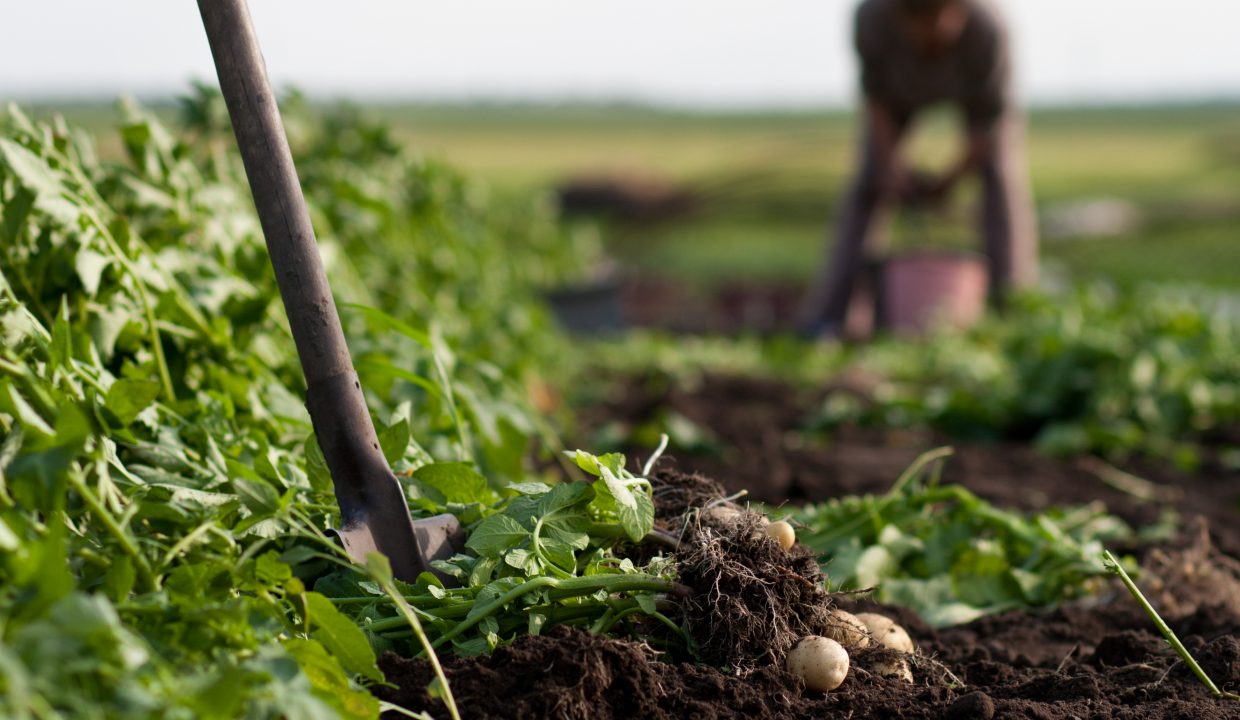
Growing Green is a more gentle, wise and holistic approach to gardening; ensuring our gardens fit into our natural eco system and play a beneficial role. In a nutshell this means using organic, natural and sustainable solutions, encouraging wildlife and reducing our carbon footprint. Here are the main things to consider:
-
There is no need to use chemicals in your garden. Nature gifts us everything we need. Read on to find out more about practical ways to use organic, natural solutions.
-
Use sustainable sources. One of the biggest issues in the gardening world is the use of peat in compost. Peatlands support an array of rare and unusual plants, insects and birds. They also store 25% of the global soil carbon and when peat is removed or dries, carbon is released. Gardening peat free helps minimises our impact on climate change and protects peatland biodiversity. Legislation is going through to ban the use of peat in compost but whilst that is happening you can vote with your wallet and buy peat free compost. Why not install a water butt? Your plants will prefer rainwater and saving water is always a good thing. Recycle and reuse – plant in yoghurt pots, take away cartons – think how you can repurpose items for your garden.
-
Encourage wildlife in your garden. Plant flowers that will provide bees and butterflies with food in the form of pollen. You can start as early as February with Hyacinths and Crocus. Have a read of our article – Bee Friendly. Bug hotels encourage insects and a pond can create a whole new eco system in your garden – including frogs – who eat slugs. Support the birds with food and nesting boxes, they will also eat garden pests. There are so many things you can do to encourage wildlife in your garden – I will write an article about it soon – in the meantime Ecosia it for more information (https://www.ecosia.org), Ecosia plant trees with their profits.
-
Consider your carbon footprint. This can be as simple as growing food in your garden – plant to plate versus plant to plane to distribution centre to supermarket is a no brainer. Coir based compost is better than peat based, coir plant pots are better than plastic – but coir is a coconut byproduct. We don’t grow coconuts in the UK – so they have to be flown in – so whilst you’ve ticked the sustainable and non-plastic box – your carbon footprint is blown.
Growing green takes a little effort but harnessing the forces of nature to protect the environment and produce stunning plants is incredibly satisfying and becomes a habit. Once you’ve started you will never consider a chemical, non-sustainable option. All it takes is a little effort and thought.
How do you apply it in practice?
Soil
Let’s start at the basics – the soil. Good soil is key to growing wonderful plants. Sometimes they may need extra help, in the form of feeding, fertilising, particularly when fruiting and flowering. There are lots of chemical solutions on the market. They work, in the short term, but they do absolutely nothing to sustain the beings in the soil that naturally fertilise it and can cause damage to natural, beneficial microbial organisms.
-
Start a compost heap. Don’t throw your garden and kitchen waste (avoid citrus & meat) away. Chuck it on your compost heap. This will create wonderful compost that you can use on your garden to fertilise the soil. Compost bins will speed up the process – many councils encourage this form of recycling and offer discounts on compost bins. You could build one or just have a heap in a hidden spot of the garden. If you don’t have the space for a compost heap and have to buy it, make sure it’s peat free.
-
Create liquid fertiliser. There are many ways to this and it will really make a difference to your plants. We have seen tremendous results this year using Comfrey and Nettle tea. Here are some easy ideas:
-
Wait until the water from cooking your veggies, eggs or pasta has cooled and pour it over your plants; full of nitrogen, calcium and phosphorus – your plants will love it.
-
Collect nettles and create nettle tea. It is said that you can grab a nettle in a certain way without being stung. We have tried this, with painful results, and most certainly say wear long gloves. Young nettles are best.
-
There are other forms of “tea” you can make – compost, Borage, Comfrey – have a scoot round the internet to discover the wonderful natural fertilising teas you can make. This is a fabulous article to read written by Matt Peskett, on his Grow Like Grandad page. Have a look at his page, there are lots of wonderful articles. Matt lives just down the road in Dorking.
-
Pests
So now we have naturally created the best environment for our plants, onto address the big caterpillar in the room. There is an army of creatures, natural beings, patrolling our gardens that are quite capable of undoing our hard work. Naughty nibblers that create holes in our leaves, decimate our seedlings and overwhelm our plants. Those beautiful white butterflies that flit around your flowers will lay eggs that turn into hungry, leaf munching caterpillars; slugs will leave a slime of destruction behind them and aphids will sneakily invade the underside of your leaves, slowly eating and taking over your plant.
Whilst it’s hard, as of course these creatures turn into the enemy in our heads, we must remember that they are all part of our eco system and serve a purpose in nature and our gardens. A bottle of chemical insect repellent/destroyer will solve your problem – but what problems does it create for nature? Slugs that have gobbled up chemical pellets will poison birds and hedgehogs that eat them, the chemicals can leach into your veggies – it’s just not good for your garden or our environment. So what can you do?
Trust nature. Nature has its own answer to ensure that plants survive. One minute you will be watching your plants being munched by a set of insects then the next minute nature will send in a new insect that will eat the first set! For example, Hoverfly and Ladybird larvae for example will eat aphids. Sometimes it’s hard to watch your plants dissolve before your eyes so there are some other solutions you can use.
-
Slugs – garden Velociraptors with on average 27,000 teeth! Their Achilles heel is that they hate onions and garlic. In my garden I have a whole area dedicated to Alliums (from the onion & garlic family). Unlike the rest of my garden – I never spy a slug in there. So one solution is to dot Alliums or other onion/garlic related plants around your garden. Another is to make a simple garlic wash. Start applying this from February – straight into the soil. The slugs start laying their eggs from mid February. According to Newcastle University studies, the garlic wash will destroy the eggs.
Blitz 1 bulb of garlic, boil in 1 pint of water for 3-4 minutes, strain & make back up to 1 pint. When you’re ready to use, dilute 2 tablespoons to 5 litres of water & sprinkle on leaves (or soil from mid February). Repeat every 2 weeks or after it rains. You can freeze the original mix or just leave in your fridge – it doesn’t matter if you wouldn’t eat it – it will still put the slugs off. It’s not fool proof but it really helps.
You can also put a rough mulch, egg shells or grit around your plants to put slugs off – they understandably hate a rough surface. Copper tape around pots is also said to work.
-
Companion planting is a wonderful and pretty way to stop insects attacking your beloved plants. You can use them in different ways. Some plants emit a scent that will disguise your master plant and some plants even “sacrifice” themselves for your master plant. Companion planting can also be used for fertilising their nearby friends – look for nitrogen releasing plants such as Beans and Lupins. Books have been written about companion planting and it is really worth researching these, here are two of my favourites.
-
Marigolds – these colourful and easy to grow plants secrete a substance that keeps harmful nematodes like eel worms away. They also release a fungus that magically exchanges nutrients with their host plants for their mutual health and growth. Their scent deters lots of naughty nibblers such as white fly, tomato moth and cabbage white butterflies whilst at the same time attracting insects such as hoverflies whose larvae eat aphids. You can even make, you guessed it, Marigold tea to spray onto your plants! Plant them by potatoes, tomatoes, cucumber, aubergines, peppers and chillies.
-
Nasturtiums – these pretty, edible, easy to grow plants attract aphids which will attack them ahead of any other plants. Butterflies will lay eggs under their leaves that the caterpillars will feed on. Plant them by tomatoes, cabbages, cucumbers, squashes and fruit trees.
-
-
Spray Away. First try just spraying away with water. You can get rid of a lot of aphids with a squirt of water and the ladybirds, spiders and other garden cleaners will come in and do the rest of the work for you. If you do get a really bad insect invasion problem, we would recommend using a Neem oil spray, 1tsp Neem oil to 1ltr water. This will repel insects but does also kill the ones on your plant – up to you. It will not harm any creatures that then eat the insects. We try to use it as a repellent together with companion planting but will use it to kill insects if they are destroying one of our precious plants. It’s a personal decision. Neem oil is also great at getting rid of fungus, mildew and rust spots. If you haven’t got Neem oil to hand, just mix 1tsp of your (eco-friendly) washing up liquid with a litre of water and spray away.
-
Cats. Not an insect but we get a lot of questions about cats, we do not need or want to explain why these can be a pest. Avoid Nepeta – Cat Mint if cats are a problem – they love it. Mulching your beds with pine cones can also deter them.
These are just a few ways of how you can Grow Green. Take your growing to the next level with a longer term, more organic, natural and sustainable approach – become a positive part of the ecosystem and make it a lifetime habit.
If you. have any questions or suggestions – let us know email grow@growsmiles.co.uk
Harness the power of nature to Grow Green!
Holly Short from Grow Smiles




